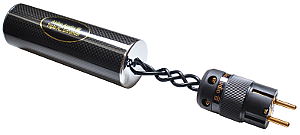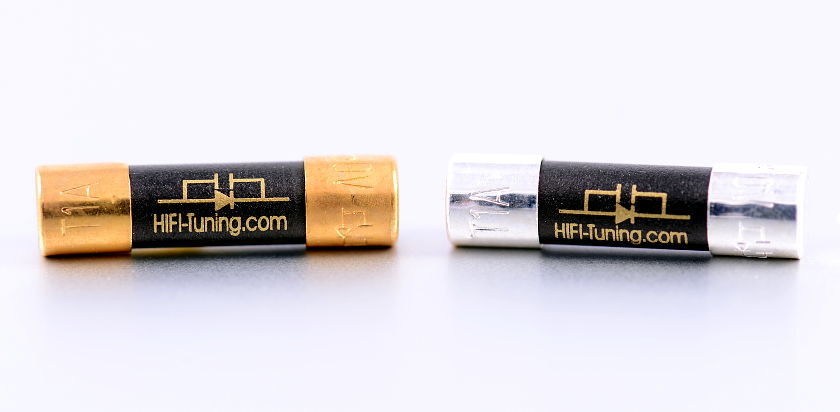
It is in the nature of things that manufacturers and developers praise their products in the highest possible terms. This makes it all the more satisfying when the products can keep their promises. And if the whole thing just costs 45 euros … jackpot!
This trial started with extremely low expectations: I should try out two microfuses to check whether a detailed test is worthwhile. To be honest, my opinion was already certain: It won’t work. Not because microfuses cannot influence the sound, but because some simply do not – or let’s say fairly – have no serious influence. At least that was my previous experience.
I have already heard of HiFi-Tuning and Bernd Ahne in Berlin. But I was surprised to discover that Ahne has been known for years for his microfuses. That is why for me the two small fuses were just two out of the myriad of options available on the market. That exactly these two should now give me a hitherto unknown sound experience … no, by no stretch of the imagination.
Of course it all turned out differently …
The products
The two fuses are the crème de la crème from HiFi-Tuning. As far as Supreme³ fuses are concerned, the caps and fuse element are made of an alloy with 99 percent silver and 1 percent gold. The fuse element is therefore a small engineering marvel because, according to Ahne, it is the only silver fuse element with slow response – and is therefore suitable for microfuses. Initially, his engineers had given him little hope that such a thing could be realised at all. But Ahne didn’t give up … with success.
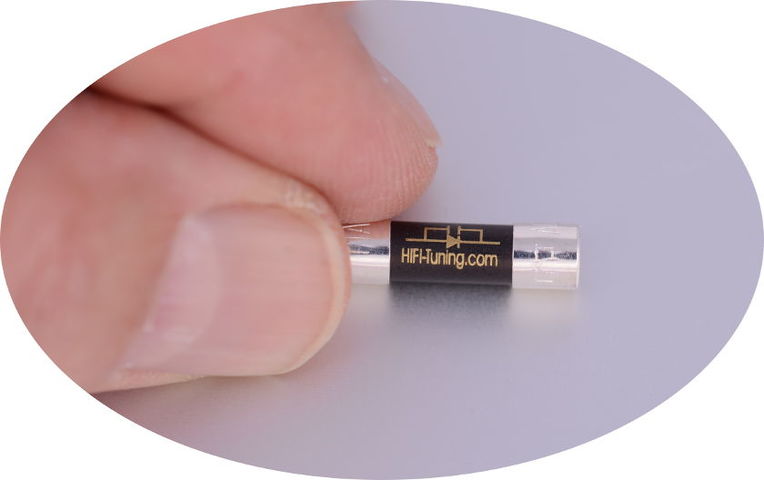
To connect caps and fuse elements, a special, self-developed solder is used, which contains copper, silver and gold. In addition, the black ceramic body and an ultimate quantum treatment, which Ahne does not want to comment on any further … trade secret.
However, he makes no secret of the fact that the fuses are cryogenised, i.e. deep-frozen. HiFi-Tuning uses a high-quality system with special software that first cools the fuses down to minus 196 °C for 24 hours, keeps them at this temperature for another 24 hours, and then thaws them extremely slowly – adding plus 0.1 degree every 10 minutes. The whole process takes a week and serves to reduce tension and stress in the material and thereby improve the conductivity.
The Supreme³ copper fuse receives the same treatments as the silver-gold option, but of course consists of 100 percent copper. But not of regular copper, but of pure “Cardas Grade 1 copper” produced by American George Cardas.
Ahne himself was initially more or less indifferent to the copper thing until Cardas personally showed him microscope images of different copper types and it became clear that the crystal structure of these types differed significantly. That aroused Ahne’s interest – and in fact his engineers later certified that the conductivity of Cardas copper was the same as that of silver … actually a technical impossibility.
Consequently, caps and fuse elements of the Supreme3 copper fuse consist of Cardas copper and have a wafer-thin gold plating (0.2µ instead of usually 5 to 10µ) since gold conducts less well than the used copper, but it is necessary as protection against oxidation. If you look closely, you will discover the Nautilus logo from Cardas on the front of the copper caps – a rarity that this logo can be used and thus a special sign of friendship between Cardas and Ahne.
It is also worth mentioning that – apart from Cardas copper from the USA – all other components come from Germany and the fuses are assembled by hand in this country.
Ahne himself makes no secret of the fact that his fuses are the best available on the market. Around 20,000 HiFi-Tuning microfuses sold annually worldwide are at least a house number other manufacturers can probably only dream of. Fuses are particularly popular in China and the USA, but business is also going well in South Korea, Taiwan, Vietnam and here in Germany.
The success is due not only to the gain in sound quality to be scrutinised but also to the price: Ahne deliberately chose a low retail price so that every HiFi fan can really afford the fuses. 45 euros per item, if you clarify the production costs once again, is a good bargain – Ahne could also easily ask for 200 according to his own statements. But it is more important to him to make the fuses accessible to the masses. My impression: The heart speaks of someone who could turn his hobby into a profession and love it more than anything.
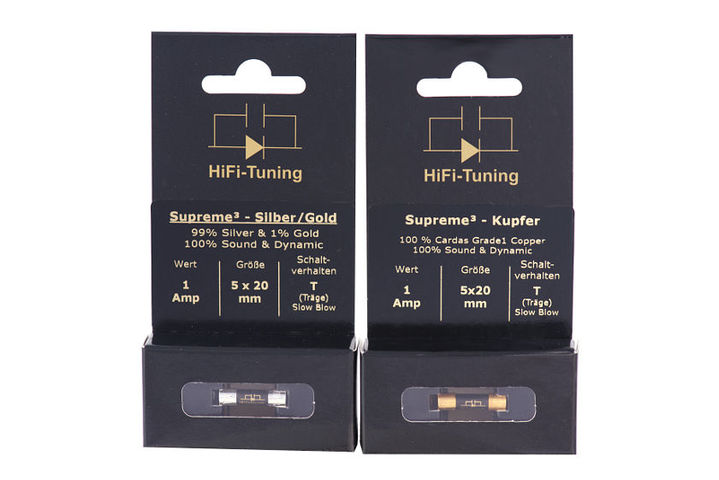
The operating principle
As much as a reminder of how it works here – enough has already been said elsewhere: The microfuse is the proverbial bottleneck through which the current that powers a device and from which the sound signal is generated has to squeeze – a wire barely thicker than a human hair. It is obvious that high-quality microfuses can influence the sound. The question is always the same: Do they actually do it?
The auditory impression
In this case, the answer to the question is very clear: Yes, they do it! And how! The more I heard, the more impressed I was. But first things first.
The trial listening mentioned at the beginning brought two spontaneous findings: The two fuses each provide more glamour and more openness. That alone I find astonishing enough for two inconspicuous components for 45 euros each – especially when you consider how many thousands of euros you have to spend on other tuning measures that don’t bring much more in the end. What exactly my hearing had picked up in terms of glamour and openness, however, only became apparent in its full scope when I started the detailed trial with more time and tranquillity.
First I used the Supreme3 copper fuse and started my listening session almost obligatorily with the album “Love Me Tender” by Barb Jungr (Linn Records 2005). In the first track “Love Letters” the Celesta sounded less sharp in the first few bars, but not a bit soft.
On the contrary: the keystrokes were clearer, brighter, shinier – and due to the lower sharpness, they lived up to their French word origin and sounded heavenly in the truest sense of the word. Barb Jungr’s voice, which started shortly afterwards, had more volume, was therefore more present and also clearer. And the cello in the middle of the piece impressed with more distinct melodiousness and much more audible vibrato.

The second track “Heartbreak Hotel” starts with individual piano chords. Here I immediately noticed the different facets in the reverb that I had never perceived before. The distortion and delay effects in the following text lines were also more detailed. However, the harp in the middle and at the end of the piece put the crown on everything: The additional sound information that was heard here meant that the instrument felt like it was right in my room.
In addition, the first thing that struck me about this piece was that the background to the music scene was figuratively blacker, so the silence was more impressive, deeper, more realistic. Everything that comes out of this black can only sound clearer and shinier. And the more details there are in the music, the more perfect they can be presented – which was already evident in Track 3 “Long Black Limousine” in the long instrumental intro: Here, for example, the squeaky synthesiser effects were a clear highlight.
Now I switched to the Supreme3 silver fuse and listened to all three pieces again. I have had different experiences with silver at different points in the sound chain – not just good ones. For me personally, the extra resolution is often too much. Not so here: All the sound enhancements that I have described above now got the cherry on the cream.
Instruments and voices sounded even more precise, even more detailed, on the second track I thought I could even notice a touch of (intended?) Barb Jungr’s hoarseness – a detail that was completely new to me. It quickly became clear: The silver option was a little crisper and even higher resolution, the copper option a little warmer, but hardly less detailed.
This impression was confirmed in the further course: I switched to Cataleya Fay’s album “Journey” (electromantica 2015) and chose the sixth track of the same name. I had very good memories of the recording quality and was quite astonished at how dull and downright the song sounded from my speakers.

Of course, I had reset to the standard microfuse to find my way back into the piece. Conclusion: It just sounded boring. It was only when I switched back to the Supreme fuses that I started to enjoy it. The stage was built much more realistically in front of me, the guitar strings sparkled more beautifully, the plucking noises were more detailed, the voice, as with Barb Jungr, was more present, warmer, but also clearer.
The more details emerged during the piece, the more beautiful the sound experience was. For example, the choral parts in the second stanza now stood out perfectly from Fay’s voice and thus complemented it much more impressively. The fine dynamics of the percussion was higher towards the end, everything sounded faster and crisper. And the reverb was just great when the last note faded away.
The silver option made everything even more accurate here and made the strings in the second stanza shine: The violins sounded finer, the cello more sonorous.
Both fuses had now adequately proven creativity and aesthetics. The question then arose how could they handle the bass range. I got out a CD that I hadn’t listened to for a long time – Supertramp’s “Brother Where You Bound” (A&M Records 1985, Remastered 2002).

First I used the standard fuse and then switched back to the Supreme copper one. I would definitely classify the recording as the most audiophile of all three used here and thus it was not surprising to me that right at the beginning of track 3 “No Between”, when track 2 fades away and the carillon begins quietly, the atmosphere between the tones was just amazing and immediately pulled me into the song.
The carillon itself sounded totally clear and fine, the percussion effects in the further course were just blatant and the saxophone at the end convinced with more reverb, more melodiousness and interestingly with a little more rigour, which was important here for the instrument to make it look more realistic than before.
But all of that was just an accessory, because I knew that the piece came up with little bass in purely quantitative terms, but then it was all the deeper and stronger and the diaphragm was massaged comfortably. I was not disappointed: What was not bad with the standard fuse became a wow effect with both Supreme options. Because the force with which the occasional bass strikes now ended up in my pit of the stomach was phenomenal. A perfect mix of control, dynamics and bass power.
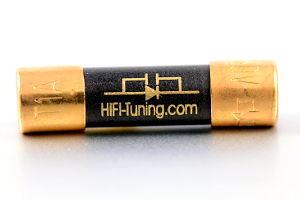
The conclusion
If you are still using standard microfuses, you should change them now. The effect is said to be even more pronounced on devices with high power consumption than on source devices. Not to imagine what potential can still be unleashed.
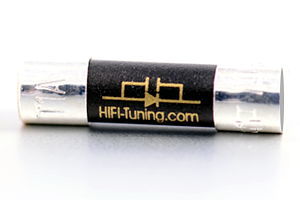
The price
Both Supreme³ options cost just 45 euros each. A bargain considering the sound quality improvement!

Distribution
Distributor in Germany:
Sieveking Sound GmbH & Co KG
Plantage 20
28215 Bremen
More information about the microfuses can be found here: www.sieveking-sound.de/hifituningprodukte.html
A list of retailers can be found here: www.sieveking-sound.de/haendler.html
Global sales:
HiFi-Tuning, Inh. B. Ahne
[email protected]

Trial unit
- Amplifier: Devialet 120
- Player: Naim CD5si
- Speaker: Duetta (modified)
- NF cable: Aircell 7 NF cable with WBT-NextGen
- LS cable: NovaPad speaker cable
- AC cable amp: VOVOX Textura power cord 1.8 m


